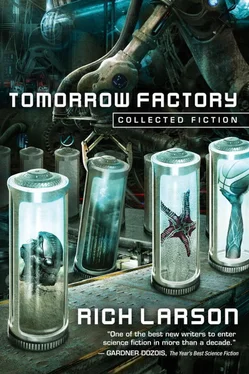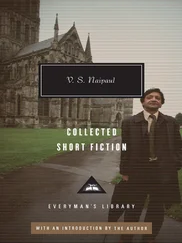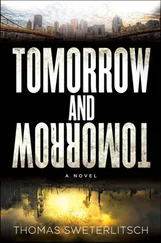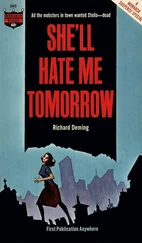I like the slow sleepwalking pace, and the slight twists on the typical story of a robot who wants to be human. These stories aren’t really about robots. I think they’re about the universal human experience of feeling different, feeling not quite accepted or not quite on the same wavelength as everyone else, and how subtly painful that can be.
Let’s Take This Viral
I banged out “Let’s Take This Viral” over the course of a weekend with a feeling of absolute freedom. Because it’s set on an artificial space station in the far future, I indulged one of my problematic writing habits, which is creating an avalanche of invented vocabulary and throwing the reader right into the thick of it. I love playing with language, and this was a perfect opportunity.
The characters in this story are both very resonant for me: the less-fun, less-adventurous friend seeking stability, and the hedonist driven by a need for salience. “Let’s Take This Viral” is essentially about the possible pitfalls of immortality, about everything becoming so recycled and so stagnant that the only change left is death. I’ve always been scared of dying, but just as scared of an afterlife—heaven or hell—that never ends.
The ending of this story is probably my favorite of any I’ve written thus far.
Brute
When I was a little kid I had a VHS called Spider-Man: The Venom Saga that compiled three episodes of the 90s Spider-Man cartoon into a full-length film. I remember watching it obsessively in my grandparents’ trailer until it became a sort of story archetype for me: the mysterious organism that grants power at a price, the initial thrill, the slow realization, the jealousy that turns deadly—it all got very deeply ingrained in my brain.
Years later, The Spectacular Spider-Man reignited my forgotten fascination and I decided to write “Brute.” The name of the titular organism comes from Til We Have Faces , a book by C.S. Lewis that is one of my all-time favorite works. I have a love for this story that others might not share. It’s tailored specifically to my childhood self. It goes into all those old places in my brain and flicks all the dusty switches.
Your Own Way Back
One of the best things about putting together this collection has been the chance to give readers a look at stories of mine that flew under the radar. “Your Own Way Back” was one of my first professional publications, but it’s also one of the most emotional pieces I’ve ever written.
The name of the main character, and his love for swimming, both come from the brilliant book Inventing Elliot by Graham Gardner. The central conceit comes from a dream I had, where a family was waiting with red balloons in a hospital where there was a machine that brought people back from the dead—sometimes for better, sometimes for worse.
I Went to the Asteroid to Bury You
Originally this poem was set on the Moon, but the physics didn’t match up right with the images I wanted so I had to switch over to an unnamed asteroid.
Capricorn
Like most of my stories, “Capricorn” is an amalgamation of works I’ve consumed in the past. In this case, it’s mostly a mash-up of The Chronicles of Riddick: Escape from Butcher Bay (futuristic prison, cryostorage, shivs, violence) and Breaking Bad (rogue chemists, mortal illness, drugs, violence).
One of the small thrills of writing is being able to establish an ultimate badass in any given universe. In this one, it’s the eponymous Capricorn, who hardly appears at all. I liked the idea of having a character hang over the whole story and influence its events without ever being physically present.
Edited
“Edited” is based off a very vivid dream I had in 2014, which birthed not only this story but also “Spiked” in Abyss & Apex and “Masked” in Asimov’s .
The dream was of three teenagers breaking into a parent’s summer rental, a sort of organic cabin made of coral, in order to party. There was a nervous energy to the proceedings, because one of the teens had changed, or had been changed, in some way, and the other two were unsure how to treat them.
In the dream it was unclear if they were recovering from an accident, if they had been modified by an outside force without their consent, or if they had done something surprising to themselves.
“Edited” shows one possibility.
Circuits
This is the most recent work in the collection—I wrote it in September 2017. It began gestating much earlier, however, jotted down in my idea repository as sentient trains crisscross a desert long after the collapse of civilization. The inspiration for this image comes, of course, from Mario Kart 64 .
I was playing the drinking version of this game at a friend’s house, and the Kalimari Desert level struck me, for the first time, as a post-apocalyptic wasteland where sentient trains and roaming smart mines (those annoying little bombs on wheels) were the only survivors.
I’m hopeful that “Circuits” still has some of the fun factor of its originator, despite the bleak setting. My grandma liked it.
Razzibot
I was mulling over the concepts for quite a while before I wrote it, thinking about the hyper-self-awareness of Instagram and how the logical extreme of a selfie would be observing yourself in third person at all times. I had the chance to talk this concept over with my writer/lawyer friend Sandra while I was visiting her in Porto.
A few months later, I sent her “Razzibot,” which I had decided to set in her hometown. She corrected all the small Portuguese details I’d butchered and told me I was welcome to come back for natas anytime.
“Razzibot” is one of those stories people will ding for not having an essential speculative element, but I’ve never really bought into that. I view science fiction as a collection of aesthetics, and I loved infusing the future aesthetic into one of the most beautiful cities I’ve ever been to.
Datafall
I wrote this flash before I bothered learning what cloud computing actually entails.
Motherfucking Retroparty Freestyle
Like “Edited,” this one draws heavily on my high school experience. Everything from the physics class to the basement where our protagonists download Maestro 2.0 to the neighborhood of the house party will seem strangely familiar to any friends of mine from high school. I even forgot to change Dyl’s name, but he won’t mind.
The retroparty itself is based off the most memorable party of grade twelve. Someone stole the host’s Xbox; a girl refused to come out from under a parked car; a guy from Detroit brought a gun; the cops put a hole through the bathroom door trying to extract a couple reluctant to stop partying. I left wearing one of my shoes and one of someone else’s. It was a good night.
An Evening with Severyn Grimes
The core concept for this one comes from Richard K. Morgan’s Altered Carbon series, while the mastermind-bodyguard duo is inspired by Eoin Colfer’s Artemis Fowl books, which I devoured as a kid.
It took a long time for “An Evening with Severyn Grimes” to see daylight, due to the collapse of the ambitious magazine that originally bought the story. I actually wrote it back in 2013, while living in Edmonton and working at a small Liquor Depot. We didn’t do much business on the best days, and Sundays were positively glacial.
I remember I brought this freshly-finished story to work on my laptop and gave it to my co-worker Jordin to read. About thirty seconds in, he looked up at me, raised both eyebrows, and said “whoa.” He didn’t come out of the back office until he finished the whole thing.
Читать дальше












